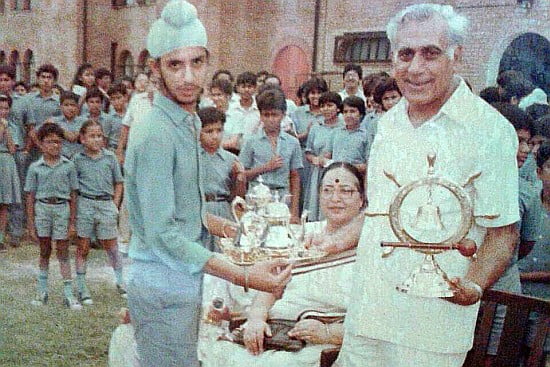In the book The Modern School (1920 – 2020), Rakesh Batabyal takes us back in time to the post-independence era of India. He gives us a framework of how the education system took shape in Delhi after the British left.
To elucidate on the same, he delved into the arrival of the refugees from Pakistan and Punjab after the partition ripped the country apart and how they changed the dynamics of Delhi and the iconic Modern School.
Inflow Of New Students
When partition happened, millions lost their homes and had nowhere to go. So they uprooted whatever life they had left and migrated to the then newly formed capital of free India. But their arrival brought many necessary but dire changes to the city.
The city that was accustomed to a certain crowd and their seismic lifestyles was ushered into a new epoch. The refugees who were majorly Muslim tried to find their footing in Delhi, and in a way to accommodate them, the city changed its significant infrastructures.
So did Modern School. The school that was built as a rebellious response to the colonial way of schooling, shifted its entire paradigm to physically fit all the students, including the refugees.
Since Modern School was not ready to take in all the new students for lack of space, it immediately started the work of enlarging the campus.
The Modern School’s trust was hence set up by Raghubir Singh, where he invited and involved a group of people who had similar philanthropic intentions.
After Modern School tried to upgrade its infrastructure, its student intake boomed.
Also Read: Millennials And Their False Sense Of Nostalgia: Where Old School Is Considered Cool
The Aftermath Of The Student Influx
An increase in students demanded an increase in teachers as well. So this made the authorities of Modern School hire highly educated individuals as teachers from the refugee pool. One of the famous ones was Ved Vyas who later went on to establish and head a branch of the school in Vasant Vihar.

It also led to a change of the principal and thus the long-serving Kamala Bose, the first principal of the school, was replaced by M.N. Kapur. M.N Kapur was an ex-teacher at Mayo College and a Punjabi from Lahore.
So his Punjabi background helped with the elite Punjabi crowd who had taken admission in the school, both as students and as teachers.
The replacement also gave more autonomy to the principal, who made several changes in the academic pattern of the school in an attempt to overthrow the existing British teaching style.
Subsequently, Modern School also played a huge part in building the Central Board of Secondary Education (CBSE) as the all-in-all Indian academic standard for everyone to follow.
How The Refugees Saved Modern School
Pre-partition, the finances of the school were hanging by the thread as there was a significant lack of students. So much so that they had to close down the junior boarding house in 1964 and the future of the seniors’ section was bleak as well.
But with the refugees migrating to Delhi and a massive influx of students, the problem of the finances was taken care of, permanently.

So along with an upgrade in the education quality of the school, Modern School also had its future set in stone. Safe to say, the refugees saved Modern School and how.
Image Credits: Google Images
Sources: The Modern School (1920-2020), The Print, Hindustan Times
Find the Blogger: Nandini Mazumder
This post is tagged under: Modern School, India partition, Delhi, schools in Delhi, CBSE exams 2021, #RefugeesWelcome, afghani refugees, partition refugees, India Pakistan divide, War of Independence, philanthropists in India
Also Recommended:
#RefugeesWelcome: Afghan Refugees Shown Support As People Welcome Them To Their Country































